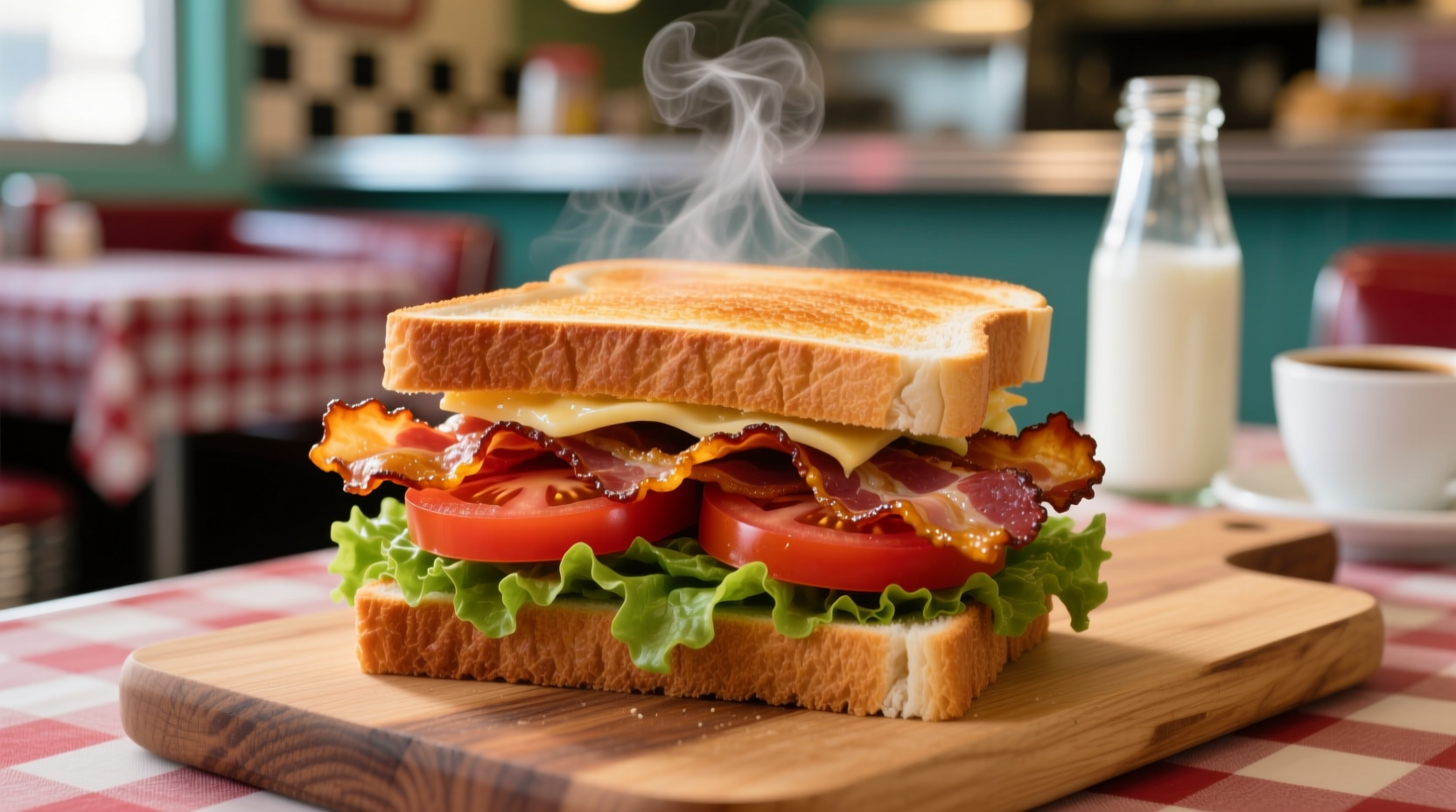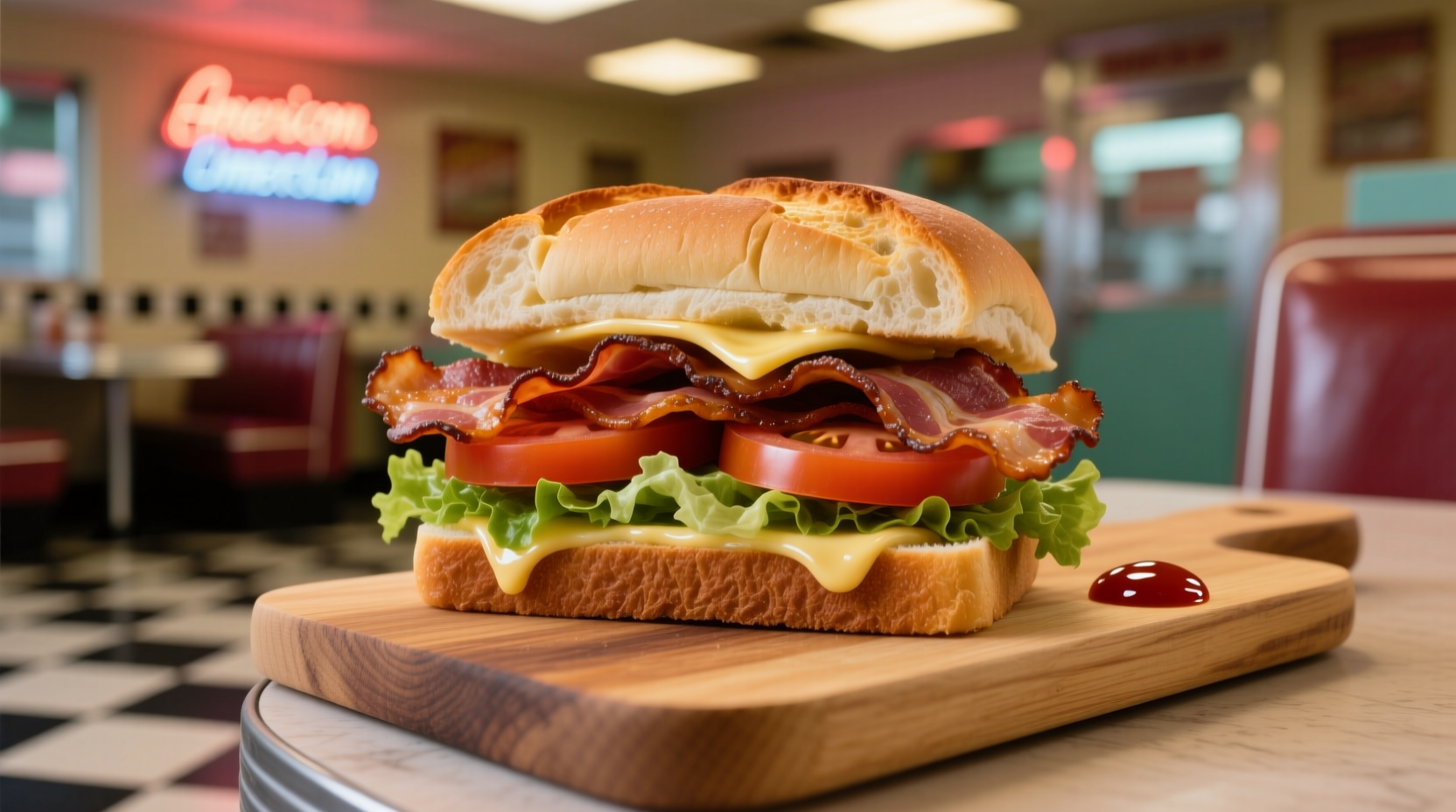The perfect bacon lettuce tomato sandwich requires thick-cut bacon cooked until crisp, ripe vine-tomatoes sliced 1/4-inch thick, fresh butter lettuce, high-quality mayonnaise, and toasted bread with a sturdy crust. This classic American sandwich balances salty, smoky, juicy, and creamy elements in every bite when prepared correctly.
Craving a truly exceptional BLT that elevates this American classic beyond basic diner fare? You've come to the right place. Forget soggy bread and flavorless tomatoes—this guide delivers the definitive approach to crafting the ultimate bacon lettuce tomato sandwich, complete with historical context, ingredient science, and professional chef techniques you can implement immediately. Whether you're preparing a quick weeknight dinner or impressing guests at your next gathering, these evidence-based methods guarantee sandwich perfection every time.
The Evolution of America's Beloved BLT
While sandwiches combining bacon, lettuce, and tomato appeared in cookbooks as early as the 1920s, the BLT as we know it gained popularity during World War II when rationing made other protein sources scarce. The combination proved perfect for showcasing available ingredients while delivering balanced flavor and texture. By the 1950s, the BLT had cemented its place in American culinary culture, appearing regularly in mainstream publications like Good Housekeeping and McCall's.
| Era | Key BLT Developments | Cultural Significance |
|---|---|---|
| 1920s-1930s | First documented recipes combining these ingredients | Emergence as affordable luxury during economic hardship |
| 1940s | Widespread adoption during WWII rationing | Became symbol of resourceful American cooking |
| 1950s-1960s | Standardized preparation methods | Icon of post-war American prosperity and diner culture |
| 2000s-Present | Gourmet variations and regional adaptations | Recognized as culinary classic worthy of refinement |
Essential BLT Ingredients Decoded
What separates an average BLT from an extraordinary one comes down to ingredient selection and preparation. Each component requires specific attention to detail:
Bread Selection Guidelines
Choose bread with structural integrity that won't collapse under the sandwich's weight. Artisan sourdough, country white, or brioche provide the ideal balance of crust and crumb. Toast bread until golden but not brittle—this creates a moisture barrier while maintaining flexibility. Many home cooks make the critical error of using bread that's too soft, resulting in structural failure before the first bite.
Bacon Perfection Techniques
Thick-cut bacon (1/8-inch minimum) delivers superior texture and flavor concentration. Cook bacon in a cold pan, gradually increasing heat to render fat slowly—this prevents curling and ensures even crispness. For restaurant-quality results, finish under the broiler for 60 seconds to achieve perfect crispness without burning. Never skip draining cooked bacon on paper towels; excess grease compromises the entire sandwich structure.
Tomato Selection Science
Ripe, in-season tomatoes at room temperature provide optimal flavor and texture. Look for "beefsteak" or "heirloom" varieties with deep red color and slight give when gently pressed. Slice tomatoes 1/4-inch thick and immediately sprinkle with flaky sea salt to draw out excess moisture while enhancing flavor. This critical step prevents the dreaded soggy bread syndrome that plagues most amateur BLTs.
Leafy Green Considerations
Butter lettuce offers the ideal texture—tender enough to bite through easily yet sturdy enough to provide structural support. Avoid iceberg lettuce, which lacks flavor and creates an unpleasant crunch that competes with other elements. Position lettuce directly against the bread to create a natural moisture barrier between the bread and tomatoes.

Step-by-Step Assembly Method
Follow this professional technique for BLT sandwich construction that maintains structural integrity while maximizing flavor in every bite:
- Toast bread until golden brown but still flexible
- Apply thin, even layer of high-quality mayonnaise to both slices
- Place butter lettuce leaves directly on bottom slice (creates moisture barrier)
- Arrange tomato slices in single layer, slightly overlapping
- Sprinkle tomatoes with flaky sea salt and freshly ground pepper
- Place bacon strips in parallel formation for even distribution
- Carefully position top slice and press gently
- Cut diagonally and secure with toothpicks for serving
Avoiding Common BLT Mistakes
Even experienced cooks make these critical errors that compromise sandwich quality:
- Using cold ingredients—bring all components to room temperature for optimal flavor release
- Overloading the sandwich—stick to 3-4 bacon strips, 2-3 tomato slices, and 3-4 lettuce leaves
- Skipping the moisture barrier—always place lettuce against bread before tomatoes
- Using low-quality mayonnaise—opt for real mayonnaise with egg yolks, not "sandwich spread"
- Cutting too soon—allow assembled sandwich to rest 2 minutes before cutting
Creative Variations Worth Trying
Once you've mastered the classic preparation, consider these chef-approved enhancements that maintain the BLT's essential character while adding new dimensions:
- Avocado BLT—add 1/4 sliced avocado for creamy richness (add after tomatoes)
- Spicy BLT—mix 1/4 teaspoon cayenne into mayonnaise or add thinly sliced jalapeños
- Herb-Infused BLT—toss lettuce with light vinaigrette featuring fresh basil or dill
- Breakfast BLT—add fried egg and substitute maple-glazed bacon
- Regional Twist—use remoulade instead of mayo in Southern-style preparations
Serving and Storage Recommendations
For optimal enjoyment, serve BLTs immediately after assembly. The sandwich's structural integrity begins deteriorating within 15 minutes as tomato moisture penetrates the bread. If preparing ahead for gatherings, store components separately and assemble just before serving. Never wrap completed BLTs in plastic—the trapped moisture accelerates sogginess. Leftover components maintain quality for 24 hours when stored properly: bacon in airtight container, tomatoes at room temperature, and lettuce wrapped in damp paper towels in the refrigerator.
Frequently Asked Questions
Q: What's the ideal bacon-to-bread ratio for a perfect BLT?
A: Professional chefs recommend 3-4 strips of thick-cut bacon per standard sandwich. This provides sufficient smoky flavor without overwhelming other components or causing structural issues.
Q: Can I make a BLT without mayonnaise?
A: While traditional BLTs include mayonnaise, acceptable alternatives include mashed avocado, herb aioli, or even a light spread of cream cheese. The key is maintaining that essential creamy element that balances the other components.
Q: How do I prevent my BLT from falling apart?
A: Structural integrity depends on proper ingredient preparation: toasted bread, drained bacon, salted tomatoes, and strategic layering with lettuce against the bread. Cutting diagonally and using toothpicks for serving also helps maintain form.
Q: What's the best tomato variety for BLTs during off-season?
A: When vine-ripened tomatoes aren't available, opt for "on-the-vine" varieties or specialty greenhouse tomatoes. Never use refrigerated tomatoes—they lose flavor and become mealy. If absolutely necessary, high-quality canned tomatoes (drained thoroughly) can substitute in winter months.











 浙公网安备
33010002000092号
浙公网安备
33010002000092号 浙B2-20120091-4
浙B2-20120091-4